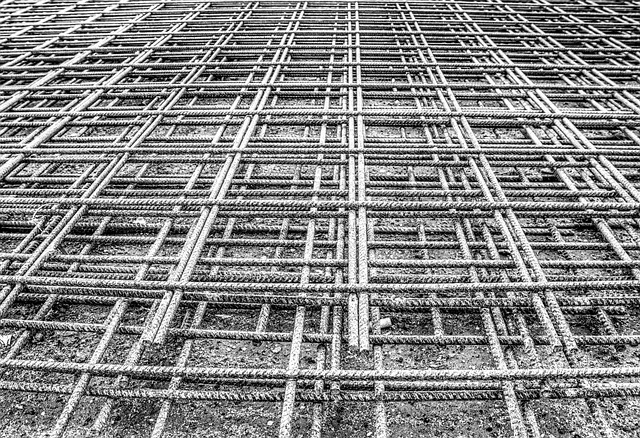Foundation Solutions: Repairing Your Home’s Structural Backbone

Structural issues in homes, driven by environmental factors and aging, require prompt attention. Fou…….
In the realm of construction and property maintenance, residential foundation repair stands as a critical aspect that ensures the structural integrity and longevity of homes. This intricate process involves diagnosing and addressing issues with a building’s foundation, which serves as its very base. As structures age or encounter environmental challenges, foundations can suffer damage, leading to cracks, settlement, or even catastrophic failures. Understanding and implementing effective residential foundation repair methods is essential for homeowners, contractors, and policymakers alike, as it safeguards the safety and value of residences worldwide. This article aims to provide an in-depth exploration of this vital topic, covering everything from foundational concepts to future trends.
Definition: Residential foundation repair refers to the practice of identifying and rectifying problems within a home’s foundation structure. This can include various components such as footings, walls, slabs, or piers that support the entire building. The primary goal is to stabilize and strengthen the foundation, preventing further damage and ensuring the structural soundness of the residence.
Core Components:
Footings: These are the foundational elements that transfer the weight of the structure directly to the earth. They are typically made of concrete and act as a solid base for the foundation walls or slabs.
Foundation Walls/Slabs: These vertical (walls) or horizontal (slabs) components provide structural support and prevent soil erosion around the building’s perimeter. Cracks or settlement in these areas can compromise the entire structure.
Piers/Support Beams: In some cases, homes are built on piers or beams that rest on a deeper layer of stable soil. These elements must be inspected and repaired to maintain proper height and load-bearing capacity.
Historical Context: The practice of foundation repair has evolved over centuries, driven by advancements in construction techniques and an increasing understanding of soil mechanics. Ancient civilizations like the Romans used advanced concrete technology to construct durable foundations. However, with the rise of modern building practices, new challenges emerged, particularly in areas prone to seismic activity or variable weather patterns. The 20th century saw significant research into foundation repair methods, leading to innovative solutions such as piering, underpinning, and hydraulic fracturing for soil stabilization.
Significance: Residential foundation repair holds immense importance for several reasons:
Structural Integrity: A damaged foundation can lead to the entire structure’s instability, increasing the risk of collapse or significant structural failures.
Home Safety: Cracks in foundations are not just cosmetic issues; they can indicate serious structural problems, especially in regions prone to earthquakes or severe weather events.
Property Value: A well-maintained foundation is a key factor in preserving and increasing property value. Major repairs or replacements can be costly but often necessary to prevent long-term damage.
Environmental Considerations: Proper foundation repair techniques contribute to sustainable building practices by extending the lifespan of existing structures, reducing the need for frequent reconstructions.
The global landscape of residential foundation repair is diverse, with varying challenges and solutions shaped by geographical and climatic factors.
North America: The United States and Canada have seen increased demand for foundation repair services due to aging housing stock and severe weather events like earthquakes and hurricanes. Advanced technologies such as laser scanning and 3D modeling are being adopted to improve accuracy in diagnosis and repair.
Europe: European countries, particularly those in the Mediterranean region, face challenges related to expansive soils and poor soil conditions. Foundation repair methods here often involve deep underpinning and soil stabilization techniques. The UK, for example, has seen a rise in “push piering” as a cost-effective solution for slab foundation repairs.
Asia: Rapid urbanization and an influx of older buildings in Asia present unique challenges. China, in particular, has witnessed a boom in high-rise construction, which requires meticulous foundation design and repair to withstand seismic activity. Japan’s experience with earthquakes has led to the development of advanced foundation systems and repair techniques that are now being shared globally.
Latin America: This region often deals with challenging geological conditions, including active volcanoes and unstable soil. Foundation repair methods here may involve innovative solutions like hydraulic fracturing for soil stabilization.
Residential foundation repair is a significant economic sector, influenced by various market dynamics and investment patterns.
Market Size: According to a 2021 report by Grand View Research, the global residential foundation repair market size was valued at USD 46.8 billion in 2020 and is projected to grow at a compound annual growth rate (CAGR) of 5.5% from 2021 to 2028. This growth is attributed to rising home construction, increasing property values, and growing awareness of structural integrity.
Investment Patterns: Private investments in residential foundation repair are driven by the potential for long-term gains in property value. Real estate developers often include foundation inspection and repair as part of their pre-construction assessments to mitigate future risks. Government initiatives and public-private partnerships also play a crucial role, particularly in infrastructure development projects.
Economic Impact: The sector’s economic impact extends beyond the construction industry. Repairs and maintenance contribute to local employment, with skilled labor requirements for diagnosis, repair, and monitoring. Moreover, successful foundation repair projects can enhance property values, benefiting both homeowners and real estate markets.
Technological innovations have significantly transformed residential foundation repair, offering more precise, efficient, and cost-effective solutions.
Ground Penetrating Radar (GPR): This non-invasive technology uses radar waves to create detailed images of the subsurface, helping identify structural issues without excavation. GPR is valuable for pinpointing cracks, voids, or anomalies in foundations.
3D Modeling and Laser Scanning: Advanced scanning techniques capture highly accurate 3D data of structures, enabling precise analysis and repair planning. This technology is particularly useful for complex foundation systems with multiple components.
Drone Technology: Drones equipped with high-resolution cameras can inspect hard-to-reach areas, providing aerial footage for detailed assessments. They are valuable in large-scale projects or areas with limited access.
Smart Sensors and Monitoring Systems: These devices detect subtle movements and changes in soil conditions, allowing for early warning of potential foundation problems. Real-time monitoring data aids in proactive repair strategies and reduces the risk of major structural failures.
Robotic Excavation: Robotics is being used to enhance excavation efficiency and safety during foundation repairs. Robots can perform precise cutting and drilling operations, reducing manual labor risks and project timelines.
Various repair techniques are employed based on the specific issues identified in a structure’s foundation.
Underpinning: Involves installing new support beams or piers beneath the existing foundation to stabilize it. This method is commonly used for slab foundations on unstable soils.
Piering: Raises and stabilizes the foundation by inserting steel piers into the soil at specific intervals. It is effective for houses built on poor soil conditions or slopes.
Heave Repair: Addressed in areas with expansive soils, where the soil swells and contracts due to moisture changes, causing foundation heave or settlement. Repairs may include soil stabilization or the installation of control joints.
Crack Repair: Cracks in foundation walls or slabs can be repaired using epoxy injections or hydraulic fracturing (to create micro-cracks that stabilize the larger ones).
Hydrostatic Pressure Relief: In areas prone to flooding, this method involves installing drainage systems to reduce soil moisture and prevent hydrostatic pressure from causing foundation damage.
Case 1: Historic Downtown Los Angeles, USA
A 100-year-old downtown LA building showed signs of structural distress due to poor soil conditions and expansive clay soils. Foundation repair specialists used a combination of piering and underpinning techniques to stabilize the structure. This project involved advanced ground penetration radar scans to identify the best placement for piers, ensuring minimal disruption to the building’s historic facade.
Case 2: Tokyo, Japan (Post-Earthquake Repair)
After a major earthquake, several high-rise buildings in Tokyo required extensive foundation repairs. Engineers employed a novel method called “push piering,” where steel pillars are pushed into the ground to support the building’s foundation. This technique is now being adopted worldwide for its cost-effectiveness and minimal disruption to existing structures.
Case 3: Coastal Villa Restoration, Mediterranean (Soil Stabilization)
A coastal villa in the Mediterranean was experiencing significant foundation settlement due to expansive soils and frequent earthquakes. Engineers used a soil stabilization method called “vibratory replacement consolidation,” which involves vibrating steel plates to compact loose soil beneath the structure. This case study demonstrates the effectiveness of innovative solutions in challenging geological regions.
Residential foundation repair is a critical yet often overlooked aspect of construction and property maintenance. With advancements in technology, techniques, and global collaboration, the industry continues to evolve, ensuring structures remain safe and stable for generations to come. As the world navigates diverse geographical challenges, innovative solutions will be essential in preserving and enhancing our built environment.

Structural issues in homes, driven by environmental factors and aging, require prompt attention. Fou…….

Foundation leveling addresses structural issues caused by factors like soil settlement and shifting…….

Foundation cracks, caused by various factors like soil movement, settlement, or poor construction, r…….

Foundation issues caused by environmental factors require prompt identification and professional eva…….

Residential foundation issues like cracks, uneven floors stem from soil shifting, water damage, poor…….

Pier and beam foundations offer stability but face issues like cracks, uneven floors due to settling…….

Pier and beam foundations are a popular choice for regions with clay soils or seismic activity, offe…….

Homeowners face common foundation issues caused by environmental factors like moisture changes and h…….

Foundation settling, heaving, and shifting signal deeper structural problems requiring immediate att…….

Residential foundations are crucial for structural integrity, protecting homes from environmental ha…….